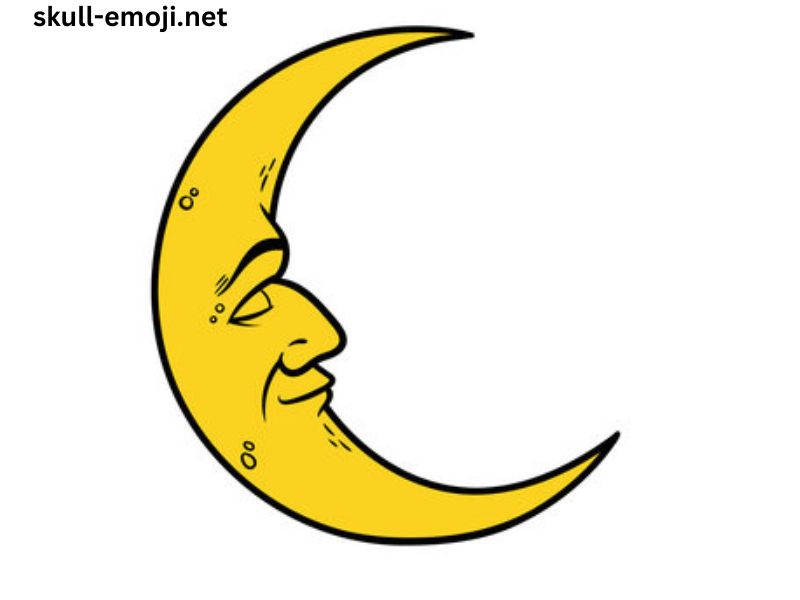The Moon Face has captivated humanity for millennia, inspiring countless myths, legends, and artistic representations. Among the various cultural interpretations of the Moon, one of the most enduring is the concept of the “Man in the Moon.” This figure, often depicted as a face etched into the lunar surface, has a rich tapestry of significance, blending folklore, science, and artistic expression. In this article, we will explore the origins, cultural significance, and scientific underpinnings of the Man in the Moon.
Origins of the Man in the Moon
The idea of seeing a face on the Moon can be traced back to ancient civilizations. The first recorded instance of lunar facial imagery comes from various cultures that attributed human-like features to celestial bodies. For example, early Mesopotamian cultures revered the Moon as a deity, often personifying it in their mythology.
Mythological Roots
In Roman mythology, the Moon was personified as Luna, often depicted as a woman. However, the notion of a “man” on the Moon appears in different forms across cultures. In many European folklore traditions, tales of a man who was banished to the Moon for a crime or for some moral failing emerged. These stories often portrayed the Moon as a place of solitude and penance, where the figure of the man was forever visible to Earth’s inhabitants.
One popular tale tells of a man caught gathering sticks on a Sunday, who was subsequently condemned to reside on the Moon. This theme of punishment resonated in various cultures, highlighting the Moon’s dual role as both a symbol of beauty and a place of exile.
Cultural Significance
The Man in the Moon has transcended its origins, finding a place in popular culture, art, and literature. This anthropomorphization of the lunar surface has inspired numerous interpretations and has become a beloved part of global folklore.
Literature and Poetry
Throughout history, poets and writers have drawn inspiration from the Man in the Moon. The imagery evokes a sense of nostalgia and wonder, prompting reflections on solitude, longing, and the mysteries of the cosmos. Famous literary figures such as William Blake and Robert Louis Stevenson have referenced the Moon and its face, embedding it in the cultural consciousness.
Children’s literature, too, has embraced the figure. The Man in the Moon is often portrayed as a whimsical character in bedtime stories, providing comfort and companionship to young dreamers. This portrayal reinforces the Moon’s role as a constant, gentle presence in the night sky.
Art and Visual Culture
The Man in the Moon has been depicted in various artistic forms, from paintings to sculpture. The famous artist Vincent van Gogh incorporated lunar imagery into his work, capturing the ethereal quality of moonlight. In his iconic painting “Starry Night,” the Moon takes on a central role, its face seemingly smiling down upon the world below.
In popular media, the Man in the Moon has appeared in animations, films, and even advertisements, symbolizing everything from nostalgia to whimsy. The character has also been featured in children’s cartoons, often portrayed as a friendly, guiding figure watching over children as they sleep.
Scientific Perspective
While the Man in the Moon is steeped in myth and cultural significance, it is also a subject of scientific interest. The actual lunar surface features that create the illusion of a face are known as “lunar maria” and “highlands.”
Lunar Features
The Moon’s surface is marked by dark basalt plains called “maria,” formed by ancient volcanic activity. These dark areas are contrasted by lighter highland regions, resulting in patterns that can resemble a face. The most recognizable features that contribute to the “Man in the Moon” illusion include large craters and the darker patches of the maria.
In 1609, Galileo Galilei was among the first to use a telescope to observe the Moon, documenting its surface features in detail. His observations laid the groundwork for modern lunar science, allowing us to appreciate the Moon not just as a cultural icon but as a geological body with a rich history.
The Illusion of Faces
The tendency to see faces in inanimate objects or patterns is known as pareidolia, a psychological phenomenon that leads humans to perceive familiar shapes where none exist. This tendency is not limited to the Moon; people see faces in clouds, rock formations, and even toast. The human brain is wired to recognize faces, a survival instinct that has deep evolutionary roots.
The Man in the Moon is a prime example of pareidolia at work. As we gaze up at the lunar surface, our brains interpret the random patterns and shadows as a recognizable face, reinforcing our cultural interpretations and myths surrounding it.
Modern Interpretations
In the contemporary world, the Man in the Moon continues to inspire both scientific inquiry and artistic exploration. With advancements in technology, we have gained unprecedented insight into the Moon’s surface and composition. Space missions, such as NASA’s Artemis program and the Lunar Reconnaissance Orbiter, are set to deepen our understanding of the Moon’s geological history and potential for human exploration.
Space Exploration
The renewed interest in lunar exploration has sparked a resurgence of interest in the Moon, reigniting the human imagination about what lies beyond our planet. The possibility of establishing a human presence on the Moon has brought the Man in the Moon back into public discourse, serving as a reminder of our desire to explore the cosmos.
As we look forward to potential future missions, the image of the Man in the Moon serves as a bridge between our past and our aspirations for the future. It encapsulates the dreams of exploration, the quest for knowledge, and the ever-present pull of the night sky.
Artistic Revival
In art, the Man in the Moon remains a popular subject. Contemporary artists reinterpret this figure, infusing it with new meaning and relevance. The character is often used to evoke themes of nostalgia, wonder, and the human connection to nature and the universe.
Art installations and public sculptures continue to pay homage to the Man in the Moon, allowing people to engage with this symbol in new and innovative ways. Festivals celebrating lunar events, such as lunar eclipses and supermoons, often incorporate themes of the Man in the Moon, inviting communities to come together under the night sky.
Conclusion
The Man in the Moon is more than just a figure cast in shadow on the lunar surface; it is a complex symbol that intertwines myth, culture, and science. From ancient stories of exile to modern artistic interpretations, this figure represents humanity’s eternal fascination with the cosmos.
As we continue to explore the Moon and unlock its secrets, the Man in the Moon will undoubtedly remain a beloved icon, a reminder of our dreams, our creativity, and our quest to understand our place in the universe. Whether as a source of inspiration, a subject of scientific inquiry, or a figure of folklore, the Man in the Moon will continue to shine brightly in our collective imagination.



